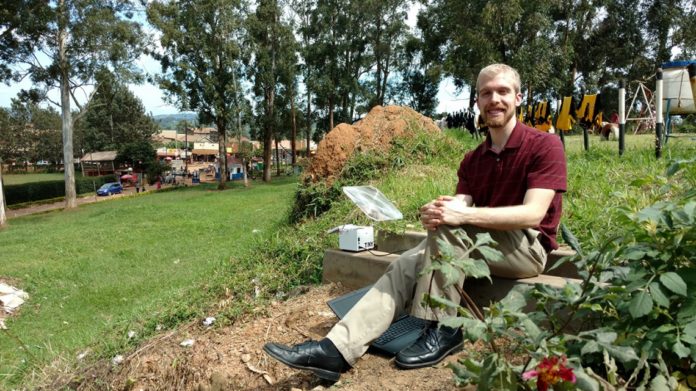A new handheld cancer detection device from the Cornell Engineering and Weill Cornell Medicine could have a major influence in the developing world. The device almost half of the size of lunchbox has shown promise as a point-of-care detector of Kaposi sarcoma-associated herpesvirus (KSHV) in resource-limited settings such as sub-Saharan Africa.
The device dubbed Tiny Isothermal Nucleic acid quantification sYstem (or TINY) performs loop-mediated isothermal amplification (LAMP) for nucleic acid quantification. That requires heating the sample to 154 degrees, which necessitates a power source.
Early testing has resulted in about 94 percent agreement with traditional methods, with results being generated in a matter of hours instead of weeks. TINY has shown the ability to generate results in approximately 2½ hours.
One of the fundamental advantages of TINY: It can gather and store heat generated from power, the sun or even a Bunsen burner, and will work notwithstanding amid impermanent power disturbance, of which three happened amid testing in Uganda. Modest’s capacity adaptability is critical in light of the fact that in many sub-Saharan African nations human services offices need access to dependable power.
For the study, Erickson’s team collected biopsy samples from 71 patients in Uganda suspected of having KS and tested the samples with TINY as well as via quantitative polymerase chain reaction (qPCR), the current standard for nucleic acid quantification. Agreement between TINY and qPCR was 94 percent (67 of 71), and the team showed that all disagreement stemmed from assay limitations and not TINY capability.
Not only can TINY be carried to remote locations for point-of-care use, it could also be valuable in clinics and hospitals where electric power can be unreliable.
Ethel Cesarman, M.D., professor of pathology said, “As a pathologist who knows how difficult it can sometimes be to diagnose KS, it is very exciting to collaborate with engineers that invented a brilliant new device that makes it so easy to support or discard a diagnosis of KS in less than three hours from the time a biopsy is taken.”
The study is published in the journal Nature Biomedical Engineering.
